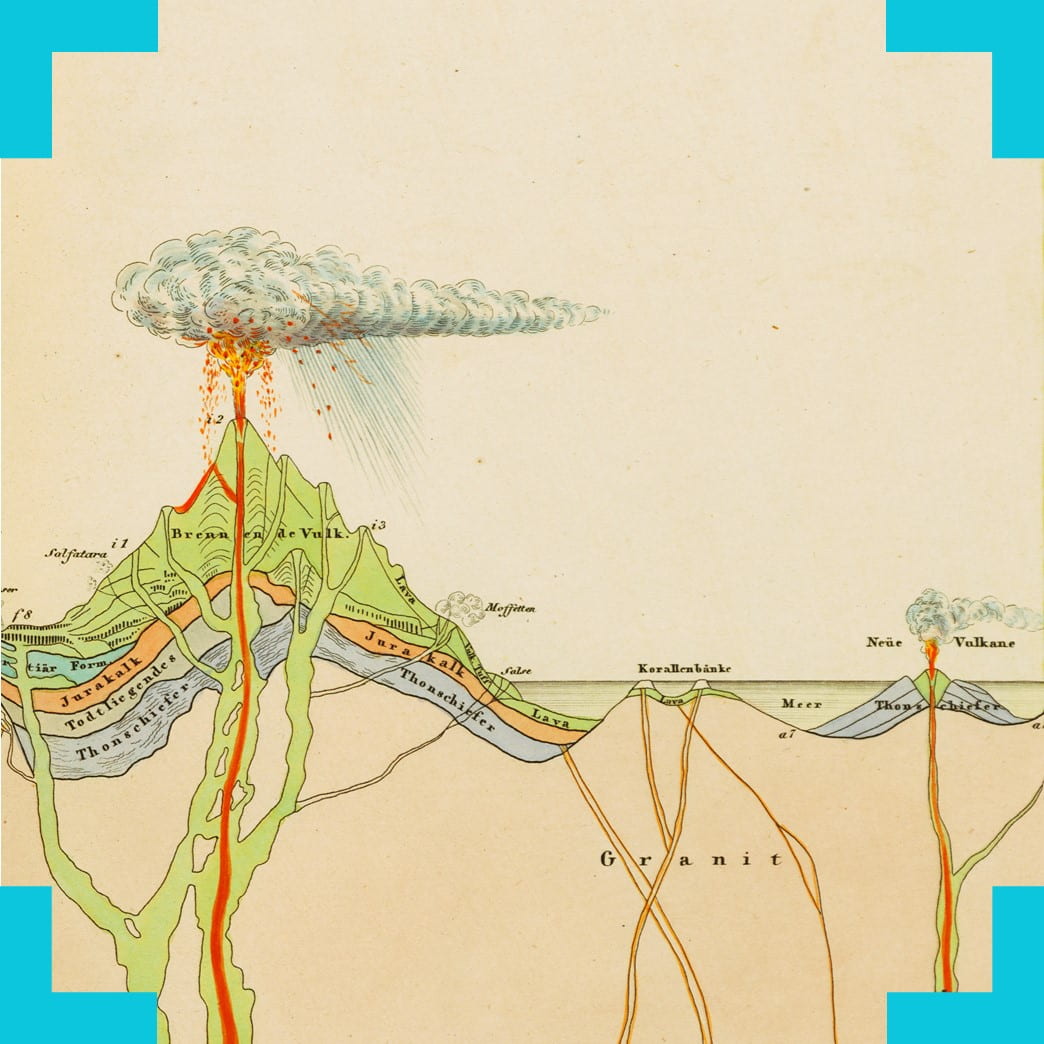Navigating Time in the Anthropocene
How can culture, creativity and ‘critical making’ can promote better critical understanding of temporality in the Anthropocene?

The Anthropocene names a new epoch: an age in which humans are leaving an indelible mark on the fabric of the planet. It is an essentially temporal concept, based on a geological sense of ‘deep time’ which cannot easily be understood in terms of a human lifespan and the competing timeframes of our daily lives.
The Anthropocene requires us to think about time in a range of new ways. For instance, ‘economic times’ – interested in value, productivity and profit – increasingly must confront generational and geologic implications. Meanwhile, political time, characterised as overly deliberative and too often short-termist, must, according to many narratives, quickly react to an accelerating world and make choices with long-term and path dependant implications. For some, success relies on speed. For others, the impact of Anthropocene is a call to slow down, given the impact of our high-speed society on our wellbeing and the natural world’s.
What did the project involve?
This project formed a collaboration with the newly-formed interdisciplinary Anthropocene Times research network and the Victoria and Albert Museum (V&A) to explore how culture, creativity and ‘critical making’ can promote better critical understanding of temporality in the Anthropocene.
The aim was to get us think about time differently: as something that we make, and that also makes us. It was also the researcher’s hope that an improved understanding of human existence against a background of multiple timescales – many of which we create – might, in turn, lead to better decision making and action in the public and political spheres, as well as to enhanced well-being and self-understanding.
Having recently secured funding for the core research activity of the Anthropocene Times network, the team sought to build on this momentum to establish a separate strand of the project which engaged their existing contacts in the Research Department of the V&A in co-produced research. The focal point of this collaboration was the V&A’s ‘rapid response’ collection. Rapid response collecting is a key area in which the museum as a creative/cultural sector organisation navigates multiple temporal scales, balancing the need to find and create objects that reflect ongoing cultural developments with commitment to the museum as a long-term archive.
In order to progress towards a more extensive co-produced research project on this topic, the researchers identified the need to build further connections with researchers within the University and partners in the local community who can also contribute to this research; and to establish more precisely the scope and focus of the creative-critical collaboration with the V&A, identifying a set of research questions that will guide the collaboration and be of interest to participants; test out approaches; and learn from previous practice for this sort of collaboration.
The activities the project undertook were:
- A short review of recent and current cultural sector collaborative partnerships, their toolkits and guidance, resulting in a short list of recommendations for the team detailing relevant best practice in co-produced research with museums sector.
- A series of 1-1 meetings with colleagues across the University of Bristol to establish contacts in new Schools and Faculties, broadening the disciplinary scope of the current collaboration, with the particular goals of engaging researchers from the natural sciences and linking with local museum partners.
- A pilot workshop in which the team work together to create a prototype digital ‘Anthropocene Timeline’ using everyday objects.
- A meeting in June/July 2021 between University of Bristol colleagues, Anthropocene Times research network members, and museum partners with the concrete goal of working towards a further funding application, agreeing on research questions and methodologies.
Who are the team and what do they bring?
- Paul Merchant (Latin American Film and Visual Culture, University of Bristol) has dedicated much attention to the research of cultural and creative media in the intersections between postcolonial theory and the environmental humanities. They have expertise in ecological approaches to cinema and visual media, urban and domestic spaces, and postcolonial and decolonial theory.
- Nicola Thomas (Historical and Cultural Geography, University of Exeter) has developed a body of work around craft geographies, situating contemporary and 20th century craft practice within the broader creative economy. Her approach addresses the intersection of material, historical, cultural, social, political and economic contexts through an exploration of craft makers livelihoods and the spatial dimension of their labour.
- Bergit Arends (History of Art, Courtauld Institute of Art) is a curator of contemporary art, museum professional, and academic. She creates and studies interdisciplinary curatorial and artistic processes with a focus on environment, natural history collections, and visual art.
- Blake Ewing (Anthropocene Times Network, University of Oxford) is a researcher concerned with the theoretical study of the practice of politics. In particular, he is interested in the importance and use of time in political thinking. His research lies at the intersection between political theory, conceptual history and historiography, focusing mainly on developing ways of analysing how political language relates to and mediates temporal experience.
- Kaja Marczewska (Research Department, V&A) is a researcher who’s work is positioned at the intersection of cultural studies, publishing, and art history and theory. Her interests include experimental and independent publishing, artists’ books, print cultures, economies of cultural production, artists’ collectives and forms of self-organisation, experimental art and writing, as well as intersections of humanities, technology and law.
What were the results?
The major outputs of this project were a series of 1-1 meetings, then a group meeting, between University of Bristol colleagues, Anthropocene Times research network members, and museum partners to explore ideas and plan further collaboration; a prototype digital ‘Anthropocene Timeline’; and a write-up of the group meeting ideas and next steps.

